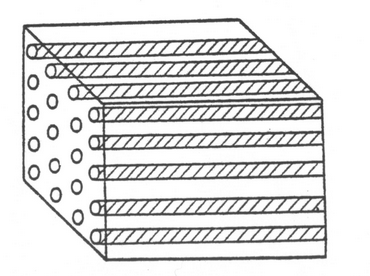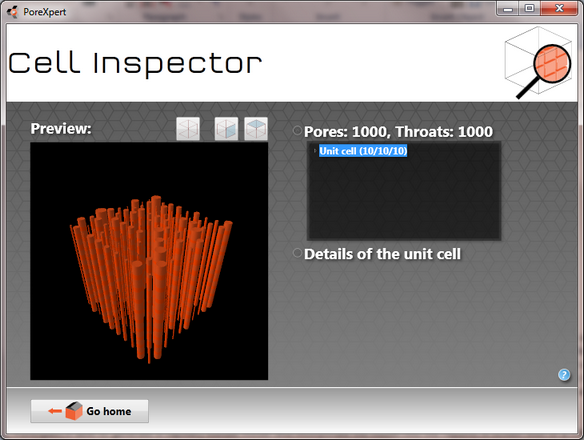Capillary Bundle Model
There are significantly different approaches for modelling porous materials and their characteristics. The first approach is the continuum model, in which the porous structure is treated as a bulk, and the physical behaviour of the system is quantified by using bulk parameters, such as diffusion coefficients and permeabilities. These parameters are obtained due to phenomenological equations, using assumptions and approximations. These assumptions and approximations, despite being acceptable under the circumstances of each single study, limit the usefulness of such continuum models to a very narrow range of systems, having physical and chemical properties similar to those of the modelled systems.
A second approach is the capillary bundle approximation, where the porous material is assumed to contain aligned, separate capillaries. A typical representation for this type of porous model is shown in the figure below.
A capillary bundle model is restricted to a maximum porosity of 78.5 %, as the diameters of the capillaries do not allow the capillaries to be placed any closer together.

Bundle of capillaries model for porous medium (Laudone, 2005)
The mercury intrusion curve and porometry data can be used to obtain a capillary cross-sectional size distribution from an idealised such as that of Figure 1. The mercury or gas pressure is converted to a “pore” size – actually the size of the entry throat, using the Laplace-Washburn equation, as discussed above. The first derivative of the mercury intrusion curve and liquid expulsion curve is assumed to be directly related to the pore size distribution for such a model void space. The first derivative curve can be converted into throat size distribution. The capillary sizes are unrealistically skewed to the small range of diameters because of the volume intrusion contribution. The pore voids are much larger, in reality, due to a well-known shielding effect in real porous media, (Webb and Orr, 1997), with large pores being shielded by smaller throats during the mercury intrusion and liquid expulsion processes.
PoreXpert is able to generate a capillary bundle model and incorporate the model into the reports. A screen shot of a PoreXpert Capillary bundle structure is shown in the next figure.

3D cell inspector displaying a capillary bundle structure.
When using the capillary bundle model to determine the size distribution, the results from the size distribution are only valid when using a combined graph of pores and throats as there are no individual pore or throat features in a capillary bundle structure as shown above.
